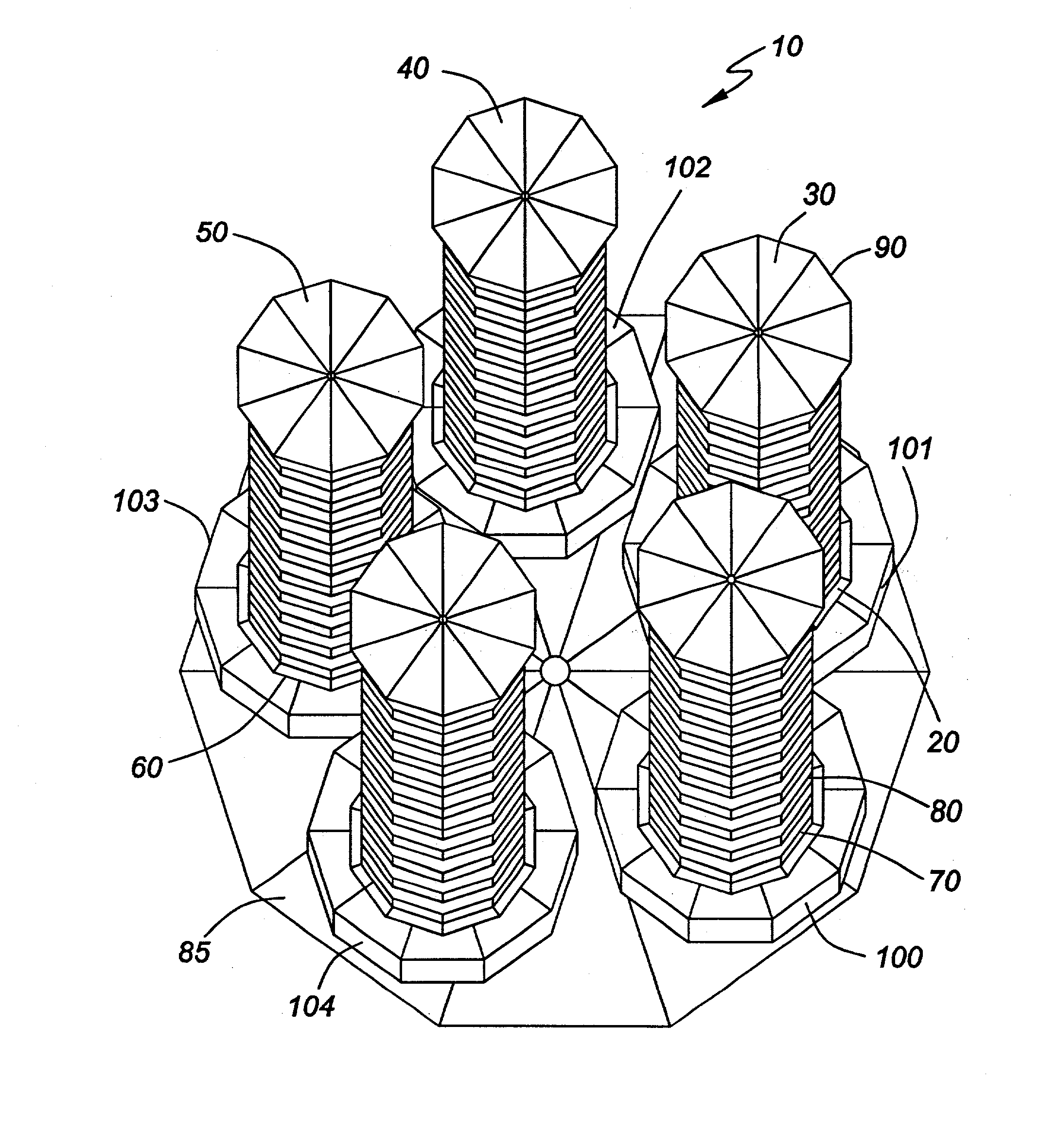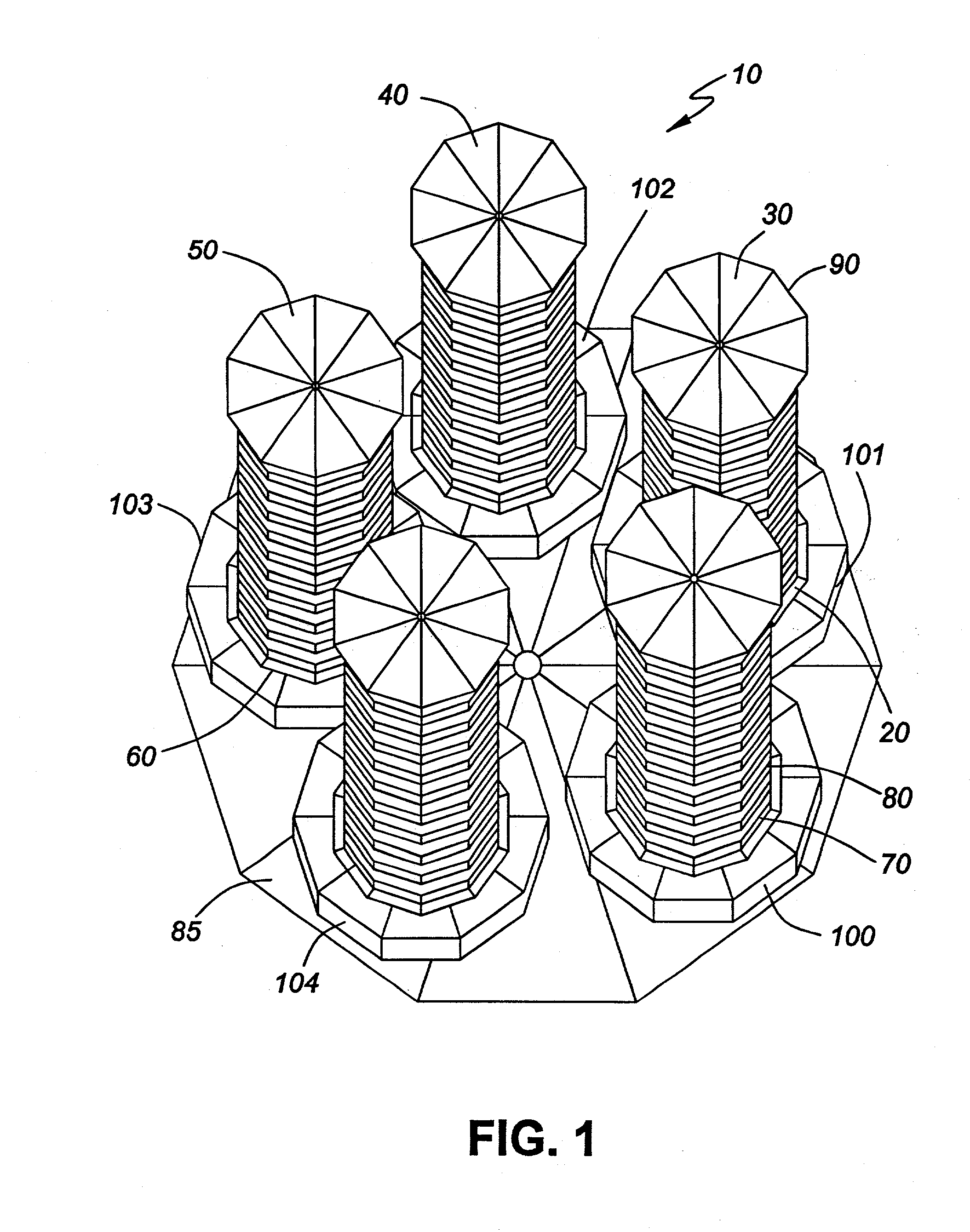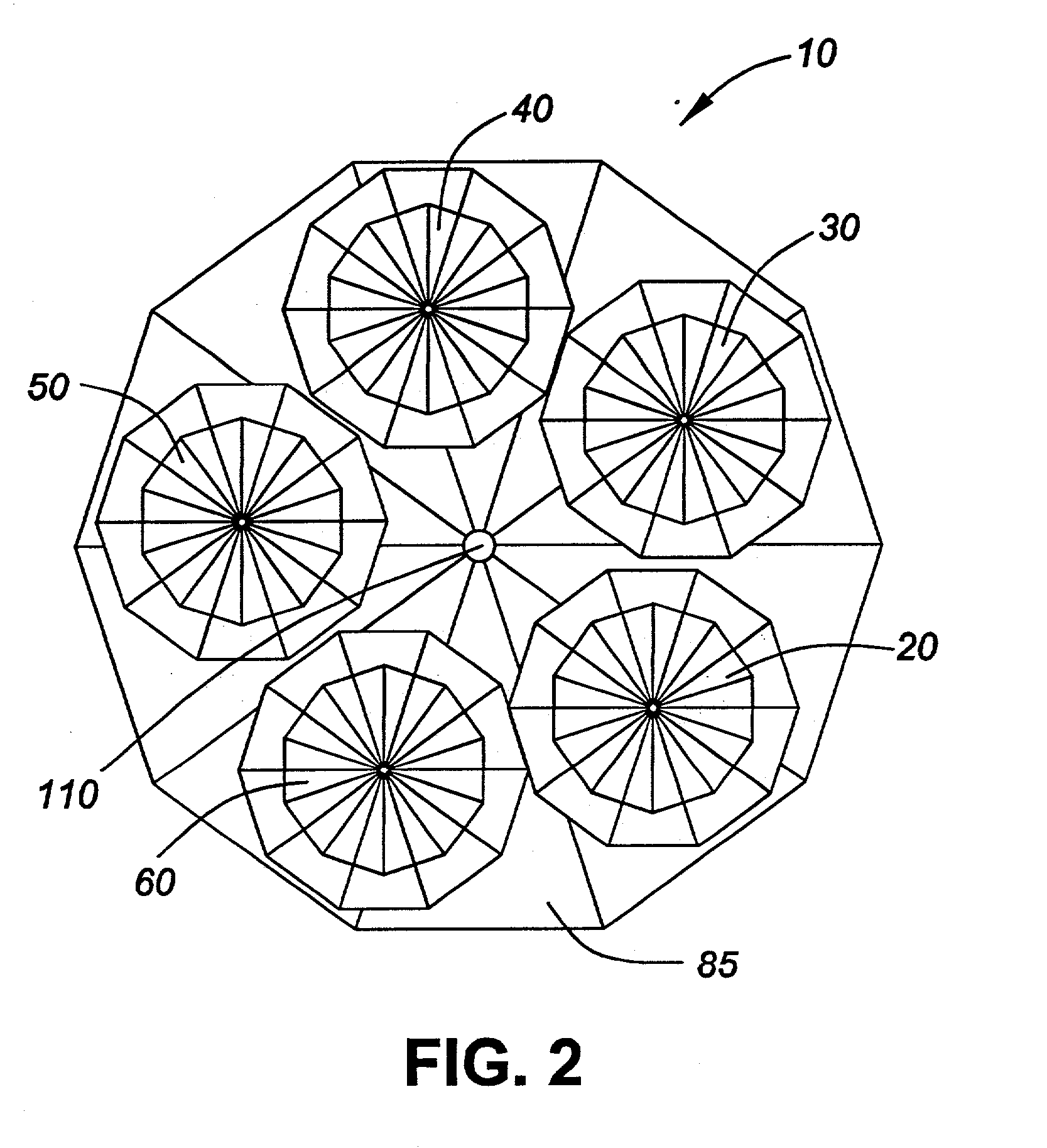Pentagonal helical antenna array
a technology of helical antenna array and tail section, which is applied in the direction of individually energised antenna array, electrical apparatus, structural forms of radiation elements, etc., can solve the problems of limiting the size of antennas that can be placed in this tail section, limiting the gain of antennas, and unsatisfactory preferred polygon configuration
- Summary
- Abstract
- Description
- Claims
- Application Information
AI Technical Summary
Benefits of technology
Problems solved by technology
Method used
Image
Examples
Embodiment Construction
:
[0035] FIGS. 1-4 are the various views of a pentagonal antenna array according to one embodiment of the present invention.
[0036] FIG. 1 illustrates an isometric view of the antenna system 10. The antenna elements shown are five mono-filar helical antenna elements, 20, 30, 40, 50, 60. A mono-filar helical antenna element consists of a conductive filament helically wound around a support structure 80. The support structure shown is a cylindrical non-conducting tube but other suitable support structure designs are possible. As can be seen in FIG. 1, each mono-filar helical antenna element is identical. The element 20 has a conductive filament 70 that is wound around the support structure 80. A better illustration of the support structure is shown in FIG. 4. At the base end of the support structure there is a base end of the conductive filament 70 where current is fed. The filament 70 has its own feed (not shown) which is a conductive element, such as electrical wire or strip. Each fil...
PUM
 Login to View More
Login to View More Abstract
Description
Claims
Application Information
 Login to View More
Login to View More - R&D
- Intellectual Property
- Life Sciences
- Materials
- Tech Scout
- Unparalleled Data Quality
- Higher Quality Content
- 60% Fewer Hallucinations
Browse by: Latest US Patents, China's latest patents, Technical Efficacy Thesaurus, Application Domain, Technology Topic, Popular Technical Reports.
© 2025 PatSnap. All rights reserved.Legal|Privacy policy|Modern Slavery Act Transparency Statement|Sitemap|About US| Contact US: help@patsnap.com



